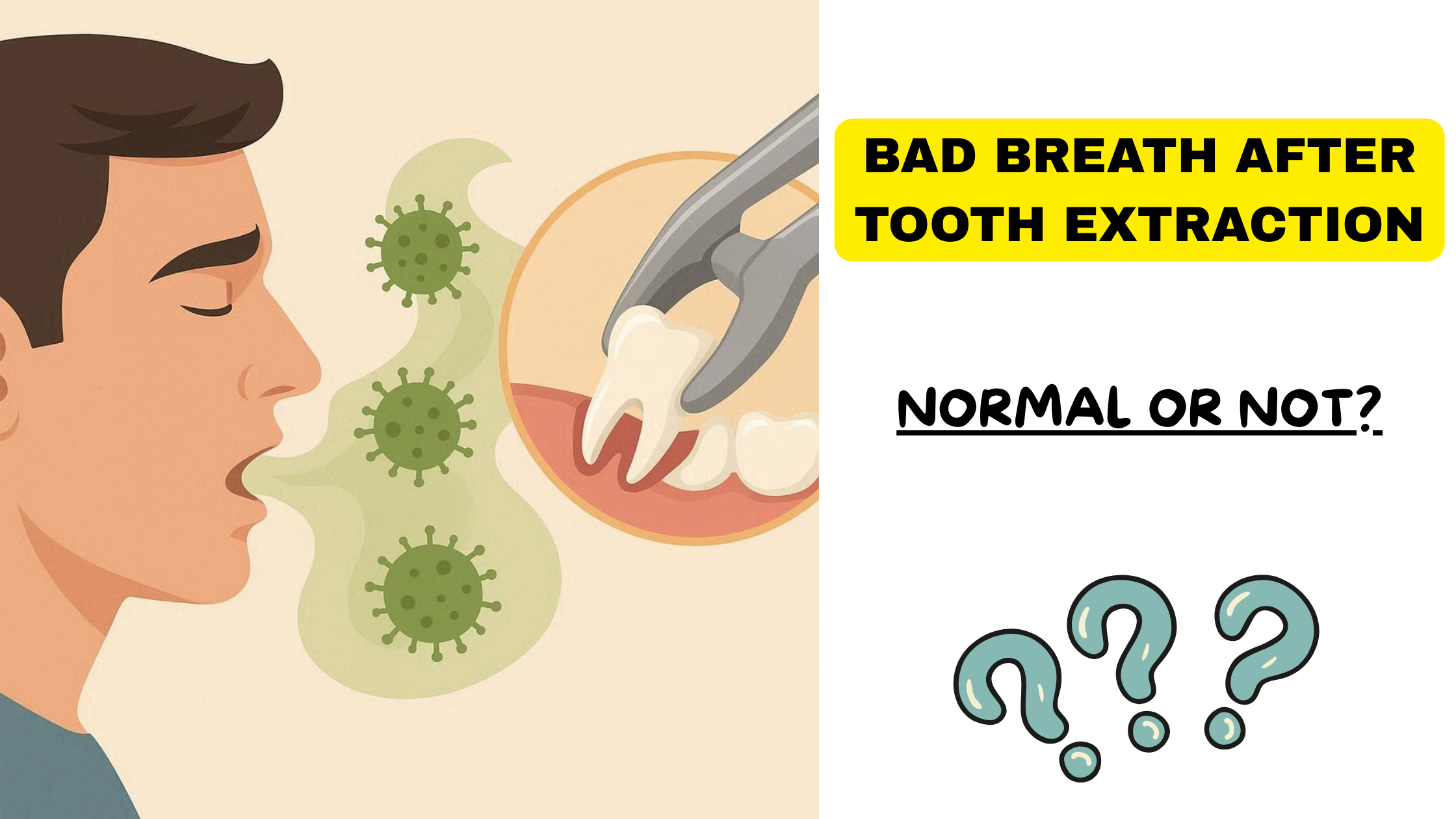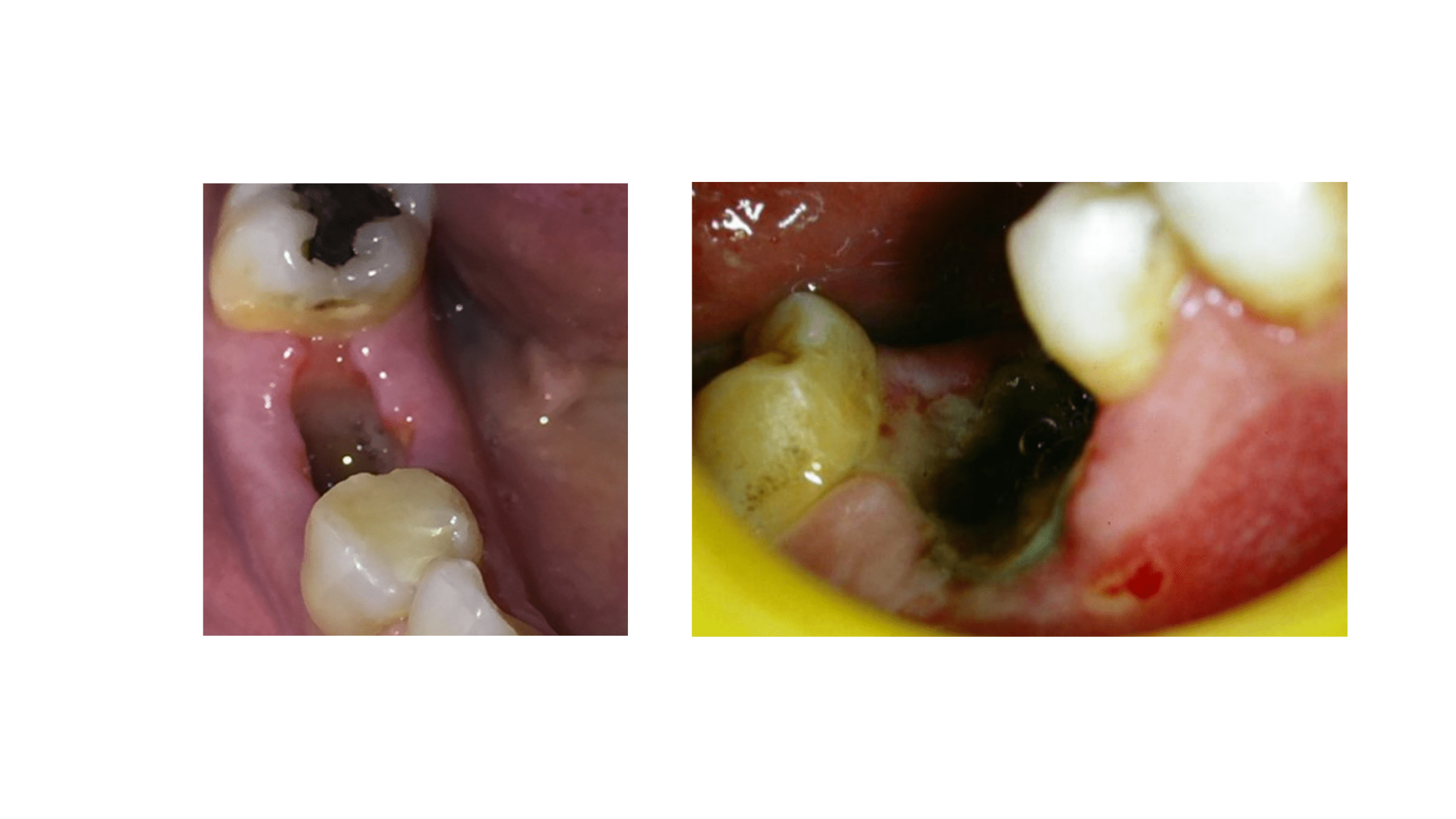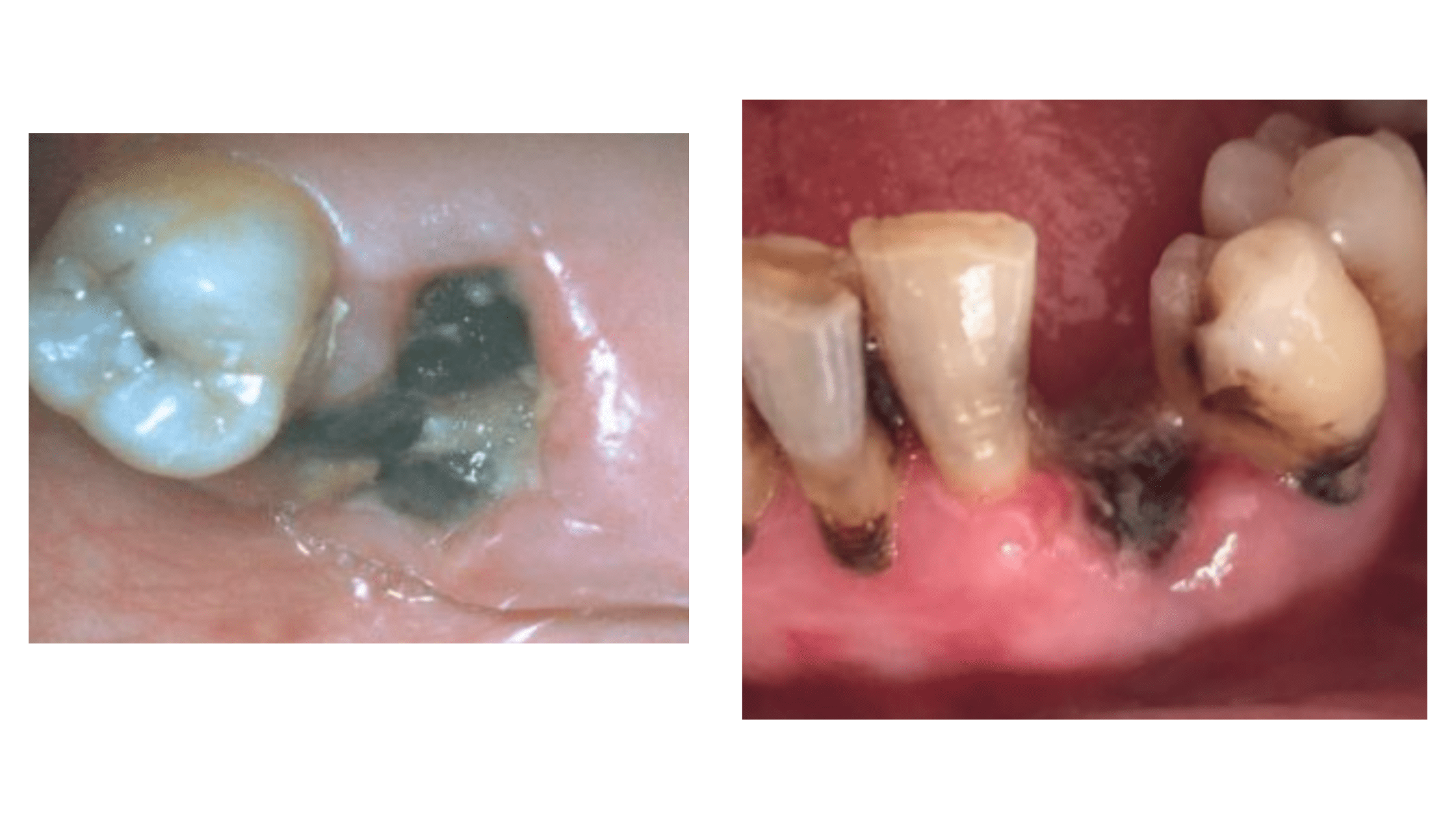Bad Breath After Wisdom Teeth Removal: Normal or Not?
 Bad breath is a common and completely normal side effect, not only after wisdom tooth removal, but after almost any type of oral surgery.
Bad breath is a common and completely normal side effect, not only after wisdom tooth removal, but after almost any type of oral surgery.
In the first few days, your mouth will feel sore, making it harder to brush and floss properly. Food particles, plaque, and bacteria can build up more easily, which naturally leads to bad breath.
This should improve on its own as the discomfort eases and you resume your daily oral hygiene routine.
Still worried? Don’t be—we’ll go over when bad breath is just a normal part of healing, and when it might be a sign of a complication.
In this article...
1. When is bad breath after wisdom tooth removal normal?
2. When can bad breath be a sign of problems?
3. Takeaway
When is bad breath after wisdom tooth removal normal?
Getting a wisdom tooth removed can be a tough experience, especially if the tooth was impacted (stuck in the jawbone).It’s normal to feel pain and discomfort after the procedure. This usually peaks within the first 24 hours and then gradually improves.
During this time, the soreness may make it hard to brush, floss, or even open your mouth fully. Food particles and bacteria can then accumulate more around your mouth, leading to bad breath and foul taste.
Another reason is the tongue, where most odor-causing bacteria live.
Normally, your tongue cleans itself by rubbing against food, your teeth, and the roof of your mouth while you chew. But after surgery, chewing and moving your tongue can be uncomfortable. Without this natural cleaning, bacteria, food debris, and dead cells accumulate on the tongue’s surface, forming a thick white coating that’s the leading cause of bad breath.
The good news? These issues are only temporary. Once you can open your mouth and return to your usual oral hygiene routine, the bad breath should go away on its own.
How can you reduce bad breath after wisdom tooth removal?
First, don’t force your mouth open wider than feels comfortable, and don't be rough with your mouth during the first week. Take it easy at first, because you could irritate the wound, dislodge the blood clot, and delay healing.
Here are some safe and gentle ways to improve your breath in the early recovery phase:
- Salt water rinses: Mix ½ teaspoon of salt in a glass of warm water (not hot) and rinse several times a day. It’s best to start on the second day to avoid disturbing the blood clot. If you rinse on the first day, don't do it forcefully.
- Clean your tongue: On regular days, cleaning your tongue once a day is enough to keep your breath fresh. But after surgery, since food and bacteria build up more easily, you can gently brush your tongue up to two to three times a day—after meals and before bed.
- Stick to a soft diet: For the first three days, eat mostly soft, cool, or warm foods. From the fourth day, you can gradually add chewier foods, but avoid too hot, spicy, crunchy, or sticky foods. Examples of foods to avoid are potato chips, caramel, popcorn, nuts, and rice. These can irritate the wound and get stuck in the socket.
- Stay hydrated: Drink plenty of water to prevent dry mouth, which is a major cause of bad breath.
- Brush gently: Use a soft toothbrush and brush as usual, but avoid the extraction site. You can brush directly over the surgical area until the end of the first week, once the gums look normal.
- Don’t touch the wound: Avoid poking the site with your tongue or fingers, and don’t chew on that side during the first week. This can dislodge the clot, cause bleeding, and trap food, leading to slower and more painful healing.
When can bad breath be a sign of problems?
Although bad breath is normal after wisdom tooth removal, sometimes it can point to a complication. The two most common ones are dry socket and infection. You need to be aware of these because early treatment can save you from a long and painful recovery.Dry socket
Dry socket is one of the most common post-extraction complications. It happens even more often with impacted lower wisdom teeth—up to 35% of the time.
So, what exactly is dry socket? It’s not an infection, but an inflammation caused by the early loss of the blood clot.
The blood clot forms right after the procedure to fill and protect the empty socket where the tooth used to be. It’s meant to stay there for the first three days. If it's dislodged or damaged too soon, the bone inside the socket becomes exposed, which can be extremely painful.

Once the socket is exposed, it can easily trap food and plaque, leading to bad breath, a foul taste, slower healing, and even a risk of infection.
Symptoms usually appear on the second or third day and may include:
- Severe throbbing pain
- Visible bone with a grayish-white appearance
- A foul smell coming from the socket
- Swelling and tenderness of the surrounding gum
If left untreated, the socket will eventually heal, but the process will be longer and much more painful.
Treatment must be done by a dentist. It involves cleaning the socket and applying a soothing dressing to relieve pain and promote faster healing.
Socket Infection
Socket infection is different from dry socket because it’s caused by bacterial overgrowth. Anything trapped in the socket—like a tooth or bone fragment, or leftover food—can become a breeding ground for bacteria and trigger an infection.

Symptoms of socket infection usually appear sooner than dry socket and are less intense, including:
- Persistent bad breath and a foul taste
- Pain (less severe than dry socket)
- Grayish-black material filling the socket
- Swollen gums
- Pus oozing from the socket
Socket infection should be treated promptly by a dentist because it cannot heal on its own. Left untreated, the infection can spread further to the jawbone and surrounding facial tissues, getting worse over time.
Treatment typically includes cleaning the socket, applying a medicated dressing, and prescribing antibiotics to fully clear the infection.
Takeaway
Bad breath after wisdom tooth removal is normal and usually nothing to worry about. You can reduce it by rinsing with saltwater several times a day and maintaining good oral hygiene.As the surgical site heals, your breath should improve, and other common side effects—like swelling, discomfort, and difficulty opening your mouth—will gradually resolve.
You should be concerned if bad breath comes with any of the following signs:
- Intense, throbbing pain
- Severe swelling that worsens instead of improving
- Pus oozing from the socket
- Difficulty opening your mouth that persists beyond the first week
- Sudden onset of intense symptoms
- Socket filled with unusual grayish or brownish material
- Fever
If you notice any of these, don’t wait—see your dentist as soon as possible. Early detection and treatment of an infection are key to a smoother, faster recovery.